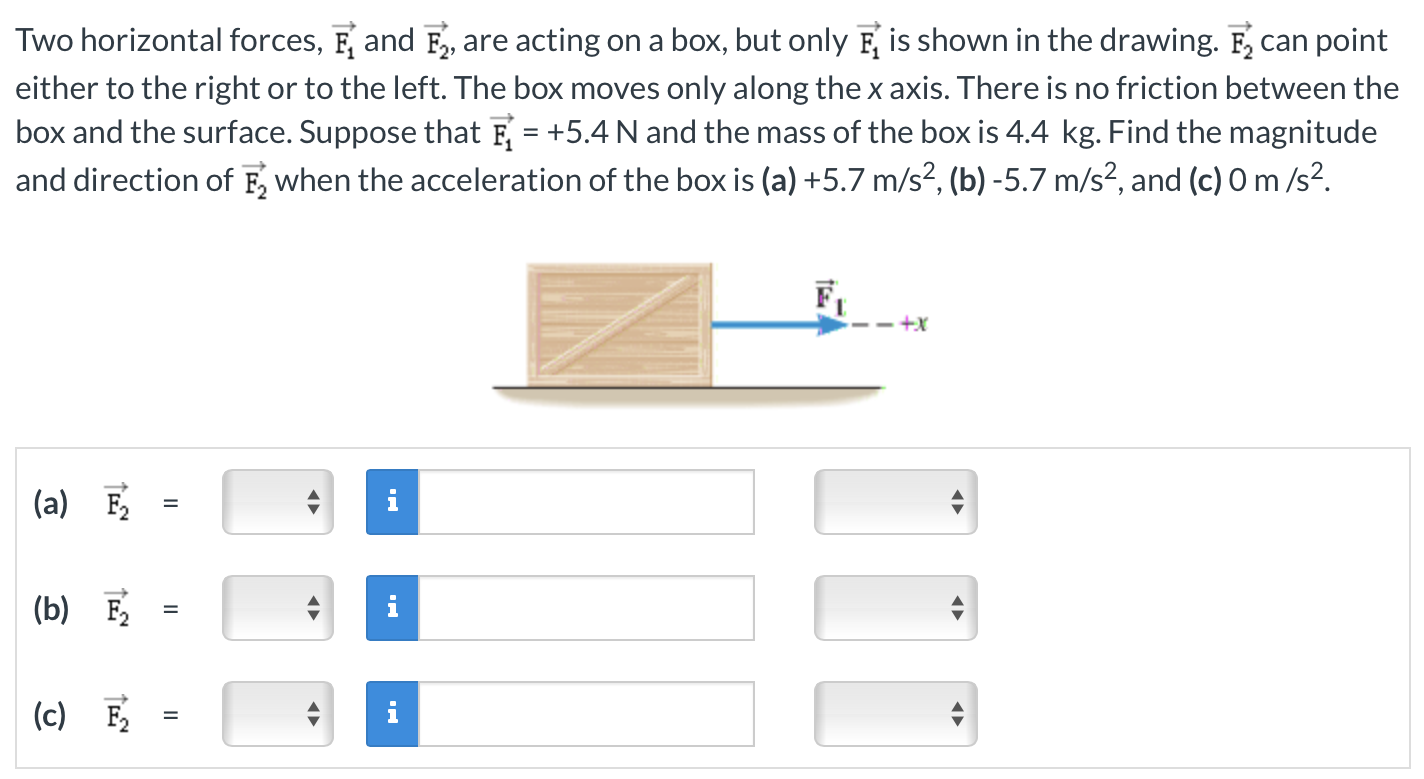Two horizontal forces, F1→ and F→2, are acting on a box, but only F→1 is shown in the drawing. F2→ can point either to the right or to the left. The box moves only along the x axis. There is no friction between the box and the surface. Suppose that F→1 = +5.4 N and the mass of the box is 4.4 kg. Find the magnitude and direction of F→2 when the acceleration of the box is (a) +5.7 m/s2, (b) −5.7 m/s2, and (c) 0 m/s2. (a) F2→ = (b) F→2 = (c) F→2 =
